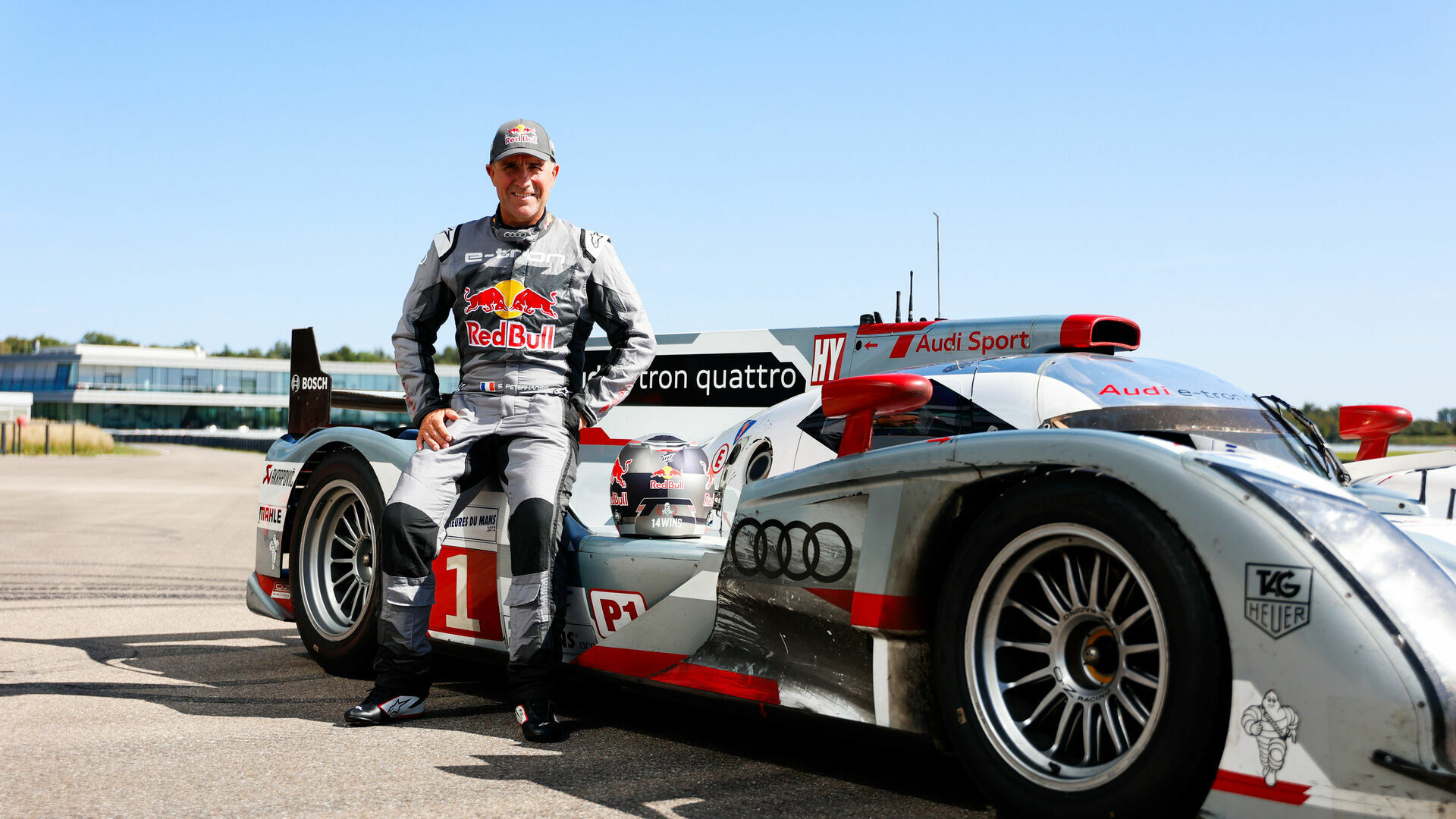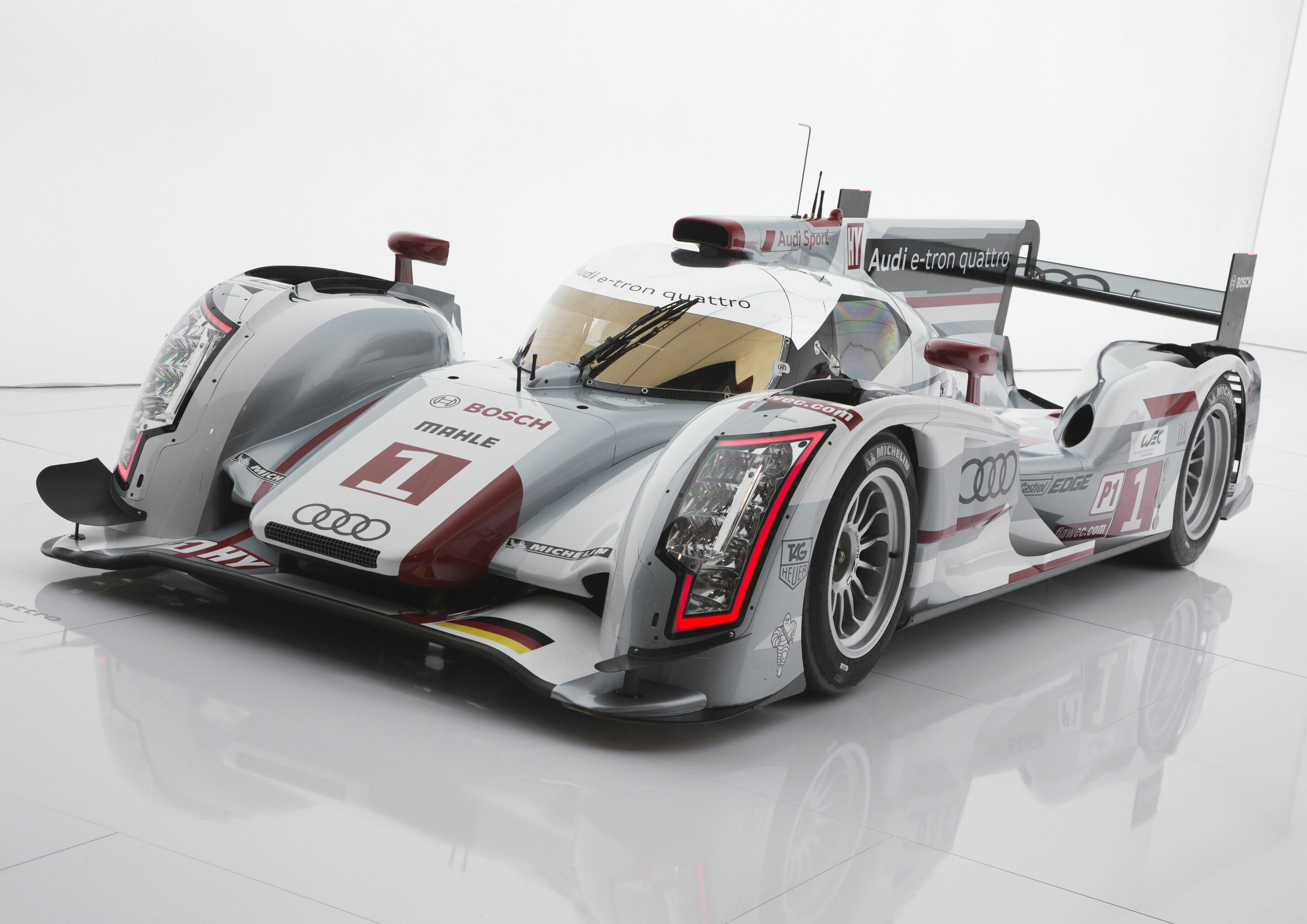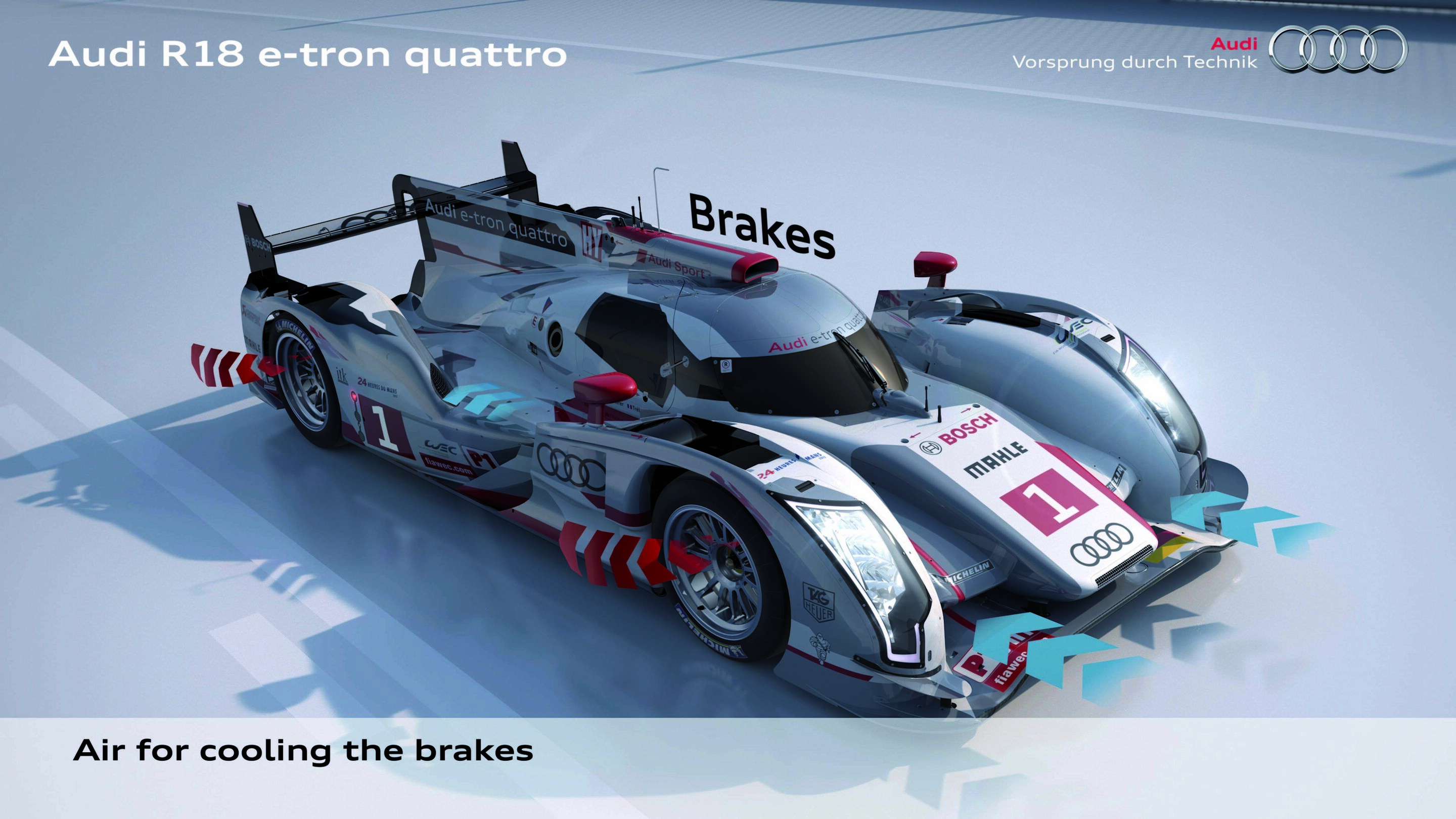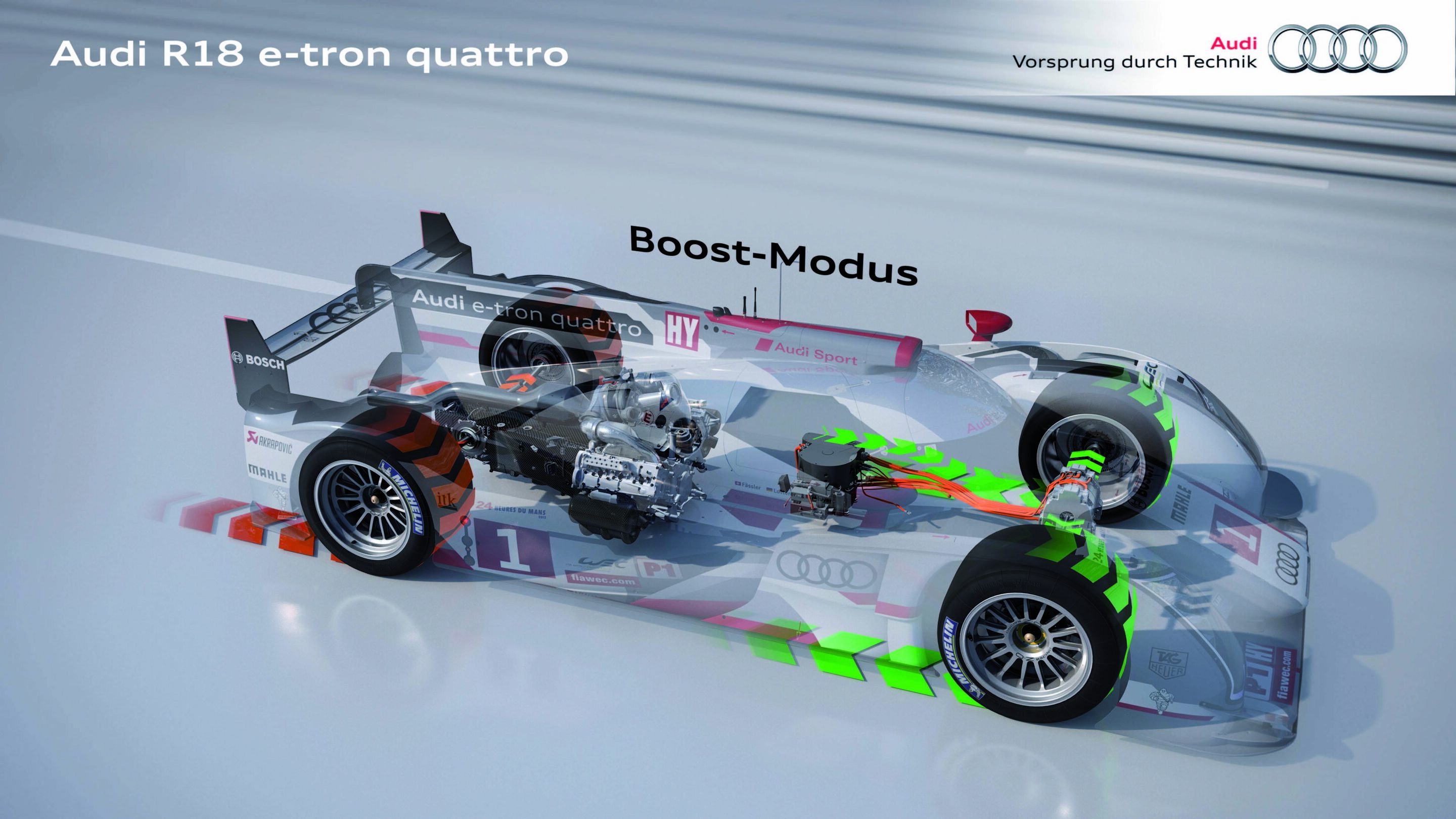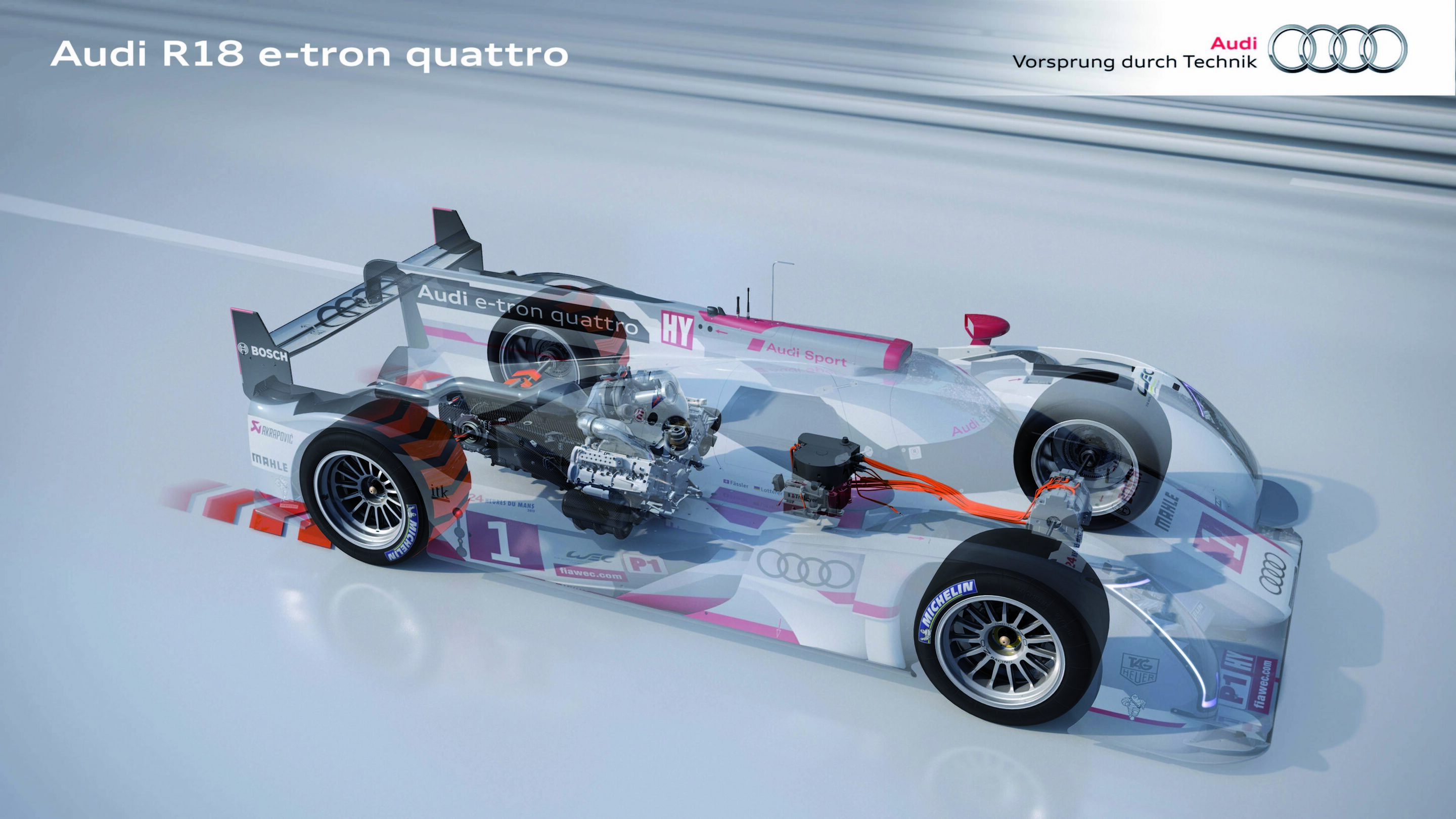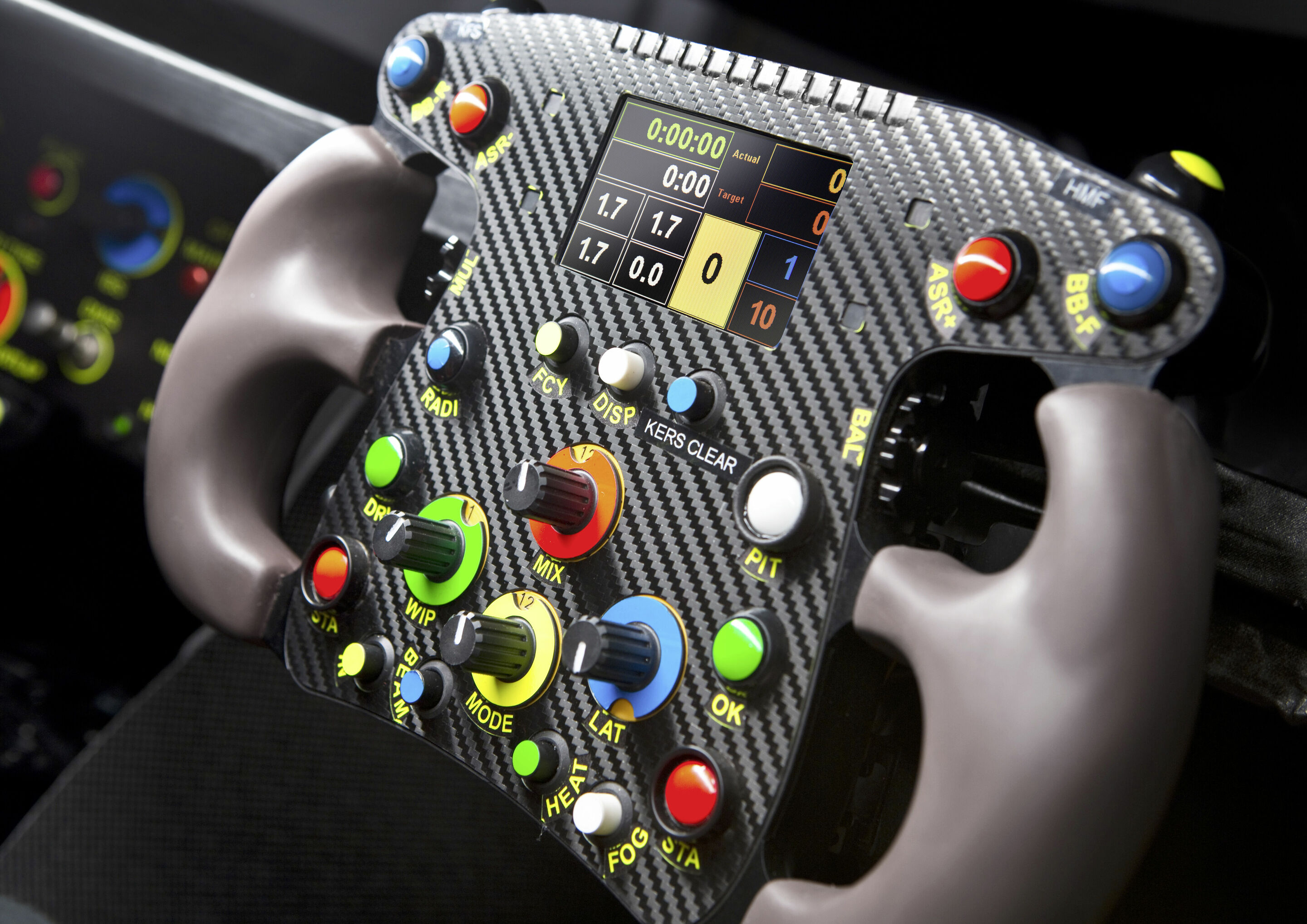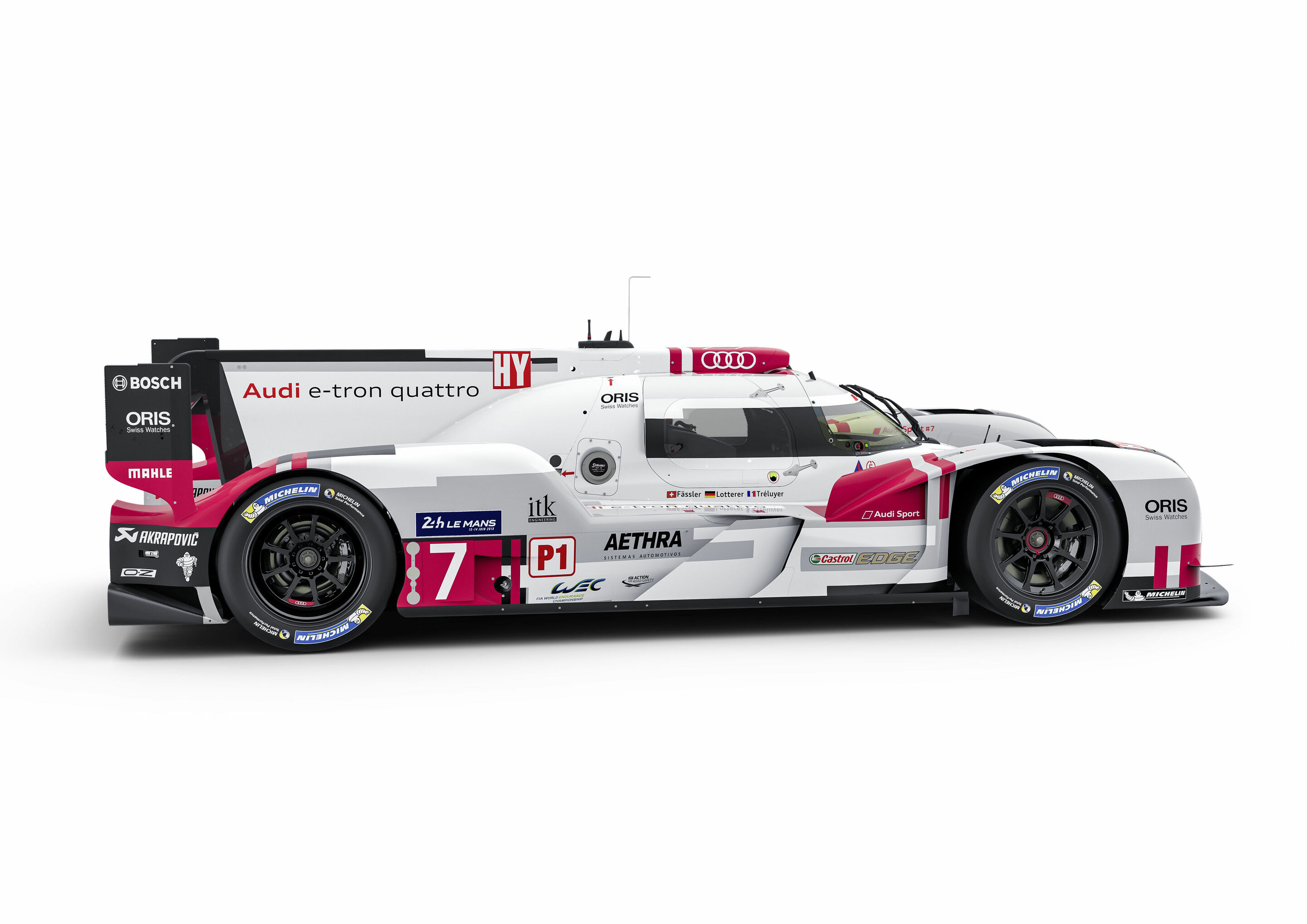Search
All search results for "R18 e-tron quattro"
(1567)
 Audi R18 e-tron quattro with new aerodynamics
Audi R18 e-tron quattro with new aerodynamics
Debut at the 6 Hours of Spa
At the 6 Hours of Spa, the Audi R18 e-tron quattro debuts a new bodywork configuration. It differs significantly from the version with which Audi won the FIA World Endurance Championship WEC season opener at Silverstone. Jan Monchaux, Head of Aerodynamics at Audi Sport, explains the background.
In the meantime it has become a small tradition for Audi to develop different bodywork configurations to be perfectly equipped for the high-speed Le Mans circuit where average lap speeds exceed 240 km/h. To compare: on the track in Shanghai, which is scheduled for November, the drivers reach an average of only 180 km/h – this is an average of 25 percent less. While the visual changes in previous years were barely recognizable to the untrained eye, Audi has consistently followed a different path since 2013. “The long tail was an effective distinguishing feature for the public,” says Jan Monchaux. Together with his development team, he developed a bodywork version specifically for the 24 Hours of Le Mans. This configuration finished flush with the rear wing and at the same time contained many more detailed solutions. The goal: significantly lower drag by omitting downforce, in order to be better equipped for higher speeds. Downforce is the force that aerodynamic components create. It presses the race car onto the ground and, as a result, permits higher cornering speeds. When the version that creates less downforce runs for the first time this year at Spa, the differences to the sister specification, which generates higher downforce levels, are more apparent than ever before. A fundamentally different front fairing, modified sidepods, openings relocated on the inner surface of the rear fenders for venting the wheel arches, and the bodywork rear edge featuring an unusual rear wing support, characterize the newly developed race car.
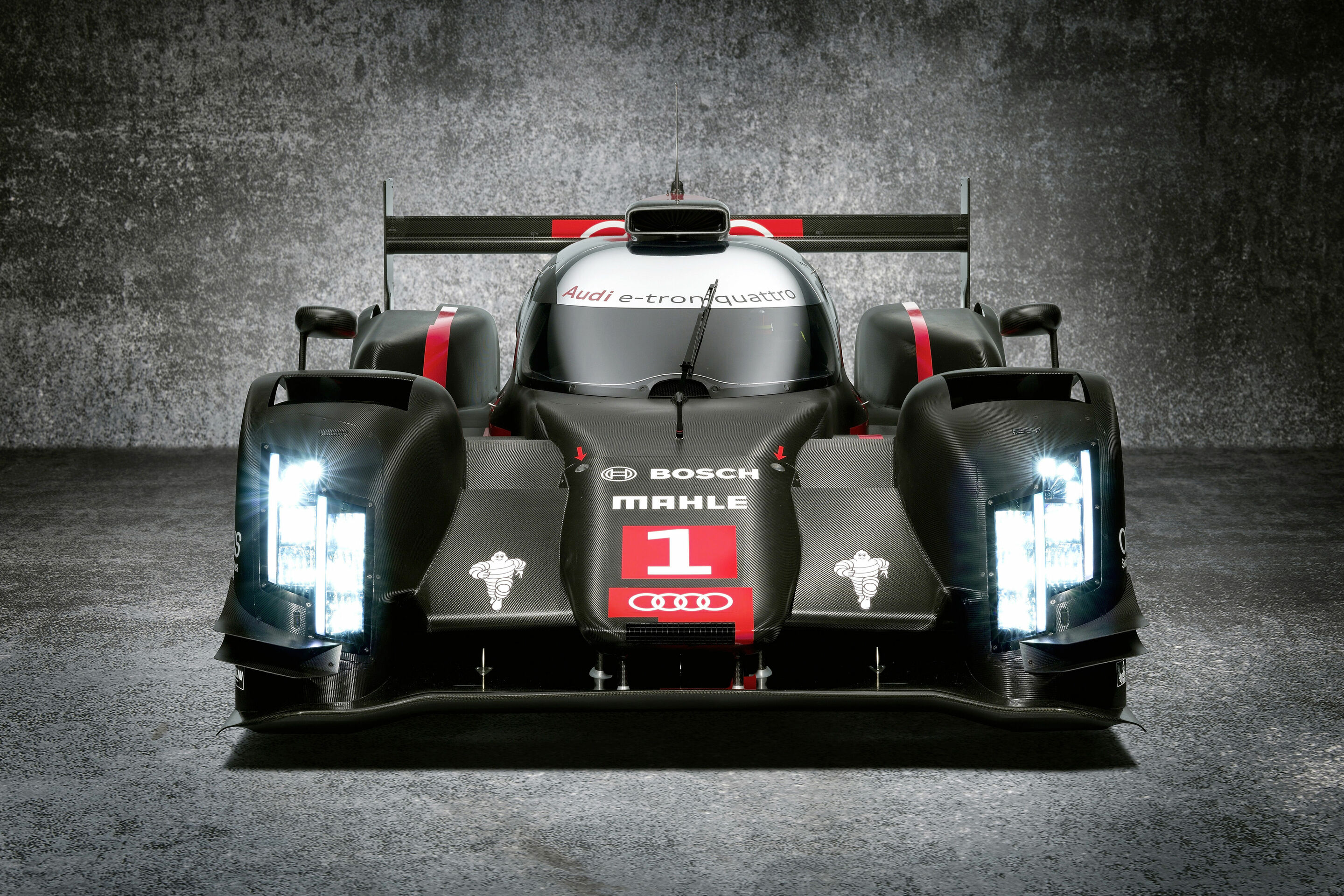 Audi R18 e-tron quattro with laser light
Audi R18 e-tron quattro with laser light
Ullrich: “A year full of challenges is awaiting us”
At the world premiere of the new Audi R18 e-tron quattro, Audi unveiled another technical highlight of its new LMP1 sports car in Ingolstadt on Wednesday night. In 2014, the brand with the four rings will be running with laser light for the first time in the Le Mans 24 Hours and in the FIA World Endurance Championship (WEC).
“By using this new lighting technology Audi is setting yet another milestone at Le Mans,” said Dr. Ulrich Hackenberg, Member of the Management Board for Technical Development of AUDI AG, at the official presentation of the new R18 e-tron quattro that took place as part of the ‘Audi Sport Finale.’ Laser light will also open up completely new possibilities for our production models in the future. Once more, motorsport at Audi accelerates a new technical development for our customers.” The innovative laser light, which about 500 guests in attendance at the ‘Audi Sport Finale’ had the chance to experience live for the first time, complements the main LED headlights of the new Audi R18 e-tron quattro. A blue laser beam backlights a yellow phosphorus crystal lens through which the light beam is then emitted. This new light source provides even more homogenous lighting of the road. Laser light just one of numerous innovations of the new R18 “The new laser light is just one of numerous technical innovations featured by our new R18,” said Head of Audi Motorsport Dr. Wolfgang Ullrich, who was recognized by Dr. Ulrich Hackenberg on Wednesday night on the occasion of his 20th anniversary at the helm of Audi Sport. “We’re not going to reveal any more than that at this early stage, as in 2014 we’re facing an extremely tough competition and a year full of challenges for Audi Sport.” As before, the motorsport commitment of AUDI AG in the new season will continue to consist of the three pillars Le Mans prototypes (LMP1), DTM and GT sport.
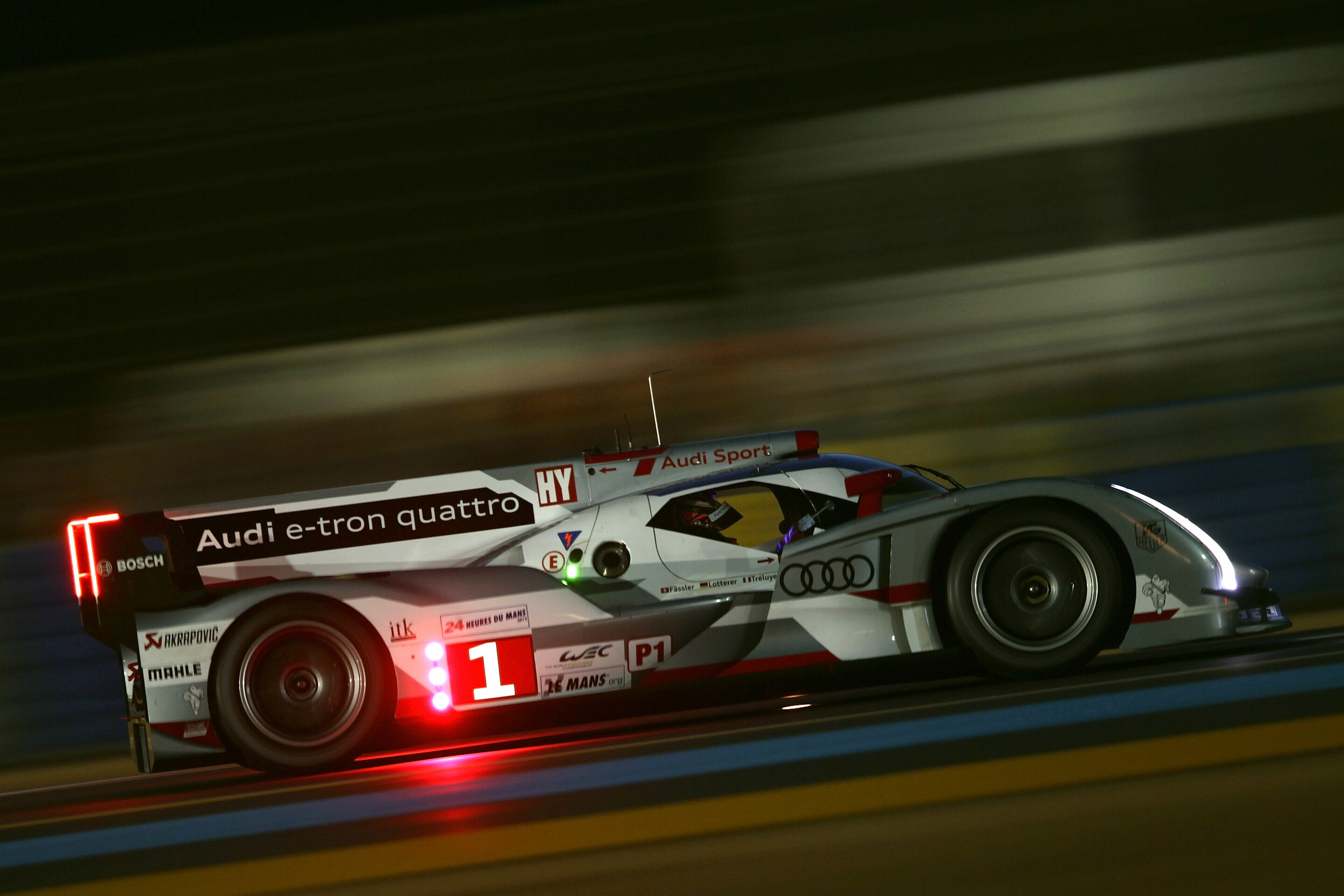 Audi R18 e-tron quattro sets the pace
Audi R18 e-tron quattro sets the pace
André Lotterer sets fastest time in first qualifying at Le Mans Both diesel hybrid cars from Audi provisionally on front row All four Audi R18 in top five
After the first qualifying session for the 80th running of the Le Mans 24 Hours a car with hybrid drive is at the front of the field for the first time in the history of the endurance classic: the new Audi R18 e-tron quattro.
Last year’s winner André Lotterer in the diesel hybrid designated as car number “1” set a time of 3m 25.453s in the first qualifying session shortly after midnight, beating last year’s pole position time by 285 thousandths of a second. The result of Le Mans record winner Tom Kristensen, who posted the second-fastest time at the wheel of the number “2” R18, caused both diesel hybrid sports cars from AUDI AG to provisionally occupy the front row of the grid. After the first qualifying session, the two R18 ultra cars are on positions three (car number “3”/Loïc Duval) and five (car number “4”/Mike Rockenfeller). As usual, on the first practice day Audi Sport Team Joest concentrated on preparing for the race, tire tests and fine-tuning the cars based on the data gathered on the test day. As early as in free practice, André Lotterer – at 3m 25.163s – was clearly below the pole position time set last year. This best mark was not achieved in qualifying at night in cooler temperatures and on a more slippery track. All twelve Audi racers completed the mandatory laps at night which are prescribed for qualifying. The four Audi R18 cars were running without any technical problems and reeled off a total of 330 laps. Before the final qualifying session on Thursday night, the cars will be completely prepared again from scratch and fitted with the engines and components intended for the race. The ultimate decision of the grid positions will be made on Thursday night from 1900 to 2100 hrs and from 2200 to 2400 hrs.
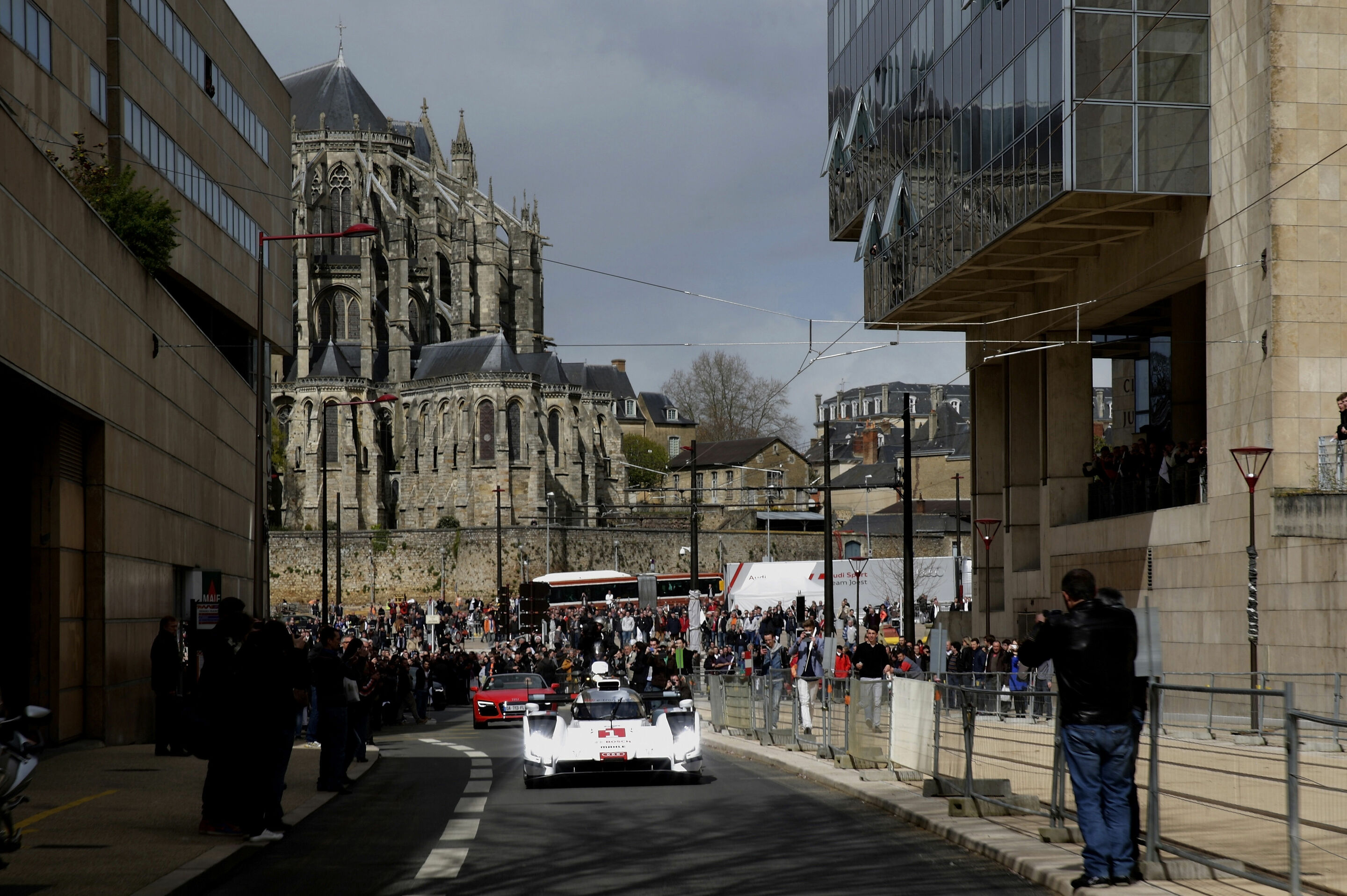 Audi unveils the new R18 e-tron quattro
Audi unveils the new R18 e-tron quattro
The new Audi R18 e-tron quattro did not do its initial kilometers at Le Mans on the legendary race track in Western France but in public traffic. Audi factory driver Tom Kristensen, with nine victories under his belt the record holder of the Le Mans 24 Hours, drove the diesel hybrid sports car from the Saint-Julien du Mans cathedral in the city center to the famous race track.
Accompanied by TV cameras and photographers, and featured in a live worldwide broadcast on the internet, Audi’s new LMP1 race car completed the near-ten-kilometer distance through the city in a motorcade, did a lap on the Circuit Bugatti and arrived in front of the race track’s modern Welcome Center amid the applause of the invited international journalists and guests. “I’ve been competing at Le Mans since 1997 but this was absolutely new for me, too, and very exciting,” said Tom Kristensen, who in 2006 had driven the revolutionary Audi R10 TDI on its world premiere – in Paris – in public traffic as well. Aside from the unusual drive which brought back memories of a Le Mans era from the distant past when the drivers would arrive in their own race cars, Audi surprised the public with a new livery of the Le Mans car. While the body of the new R18 e-tron quattro was still black with red details when the car made its world debut in December, a striking color scheme now catches the eye. The new color scheme of white, silver, red and black stands for fresh, expressive graphics. “The colors are symbolic,” explains Dirk van Braeckel, Design Manager Motorsport and Special Projects at Audi. “Silver emphasizes the past success in racing. As a very quiet color, it provides the base for our livery. White, as the second color, harmonizes well with silver and appears very light. It stands for the hybrid drive. White is used asymmetrically in order to symbolize the complexity of this powertrain technology.” The contours are modeled after the conductive tracks on PCBs, but clearly featured as an abstraction.
 New Audi R18 e-tron quattro even more efficient
New Audi R18 e-tron quattro even more efficient
Aerodynamics, hybrid drive and many other details improved Efficient TDI engine consumes even less fuel than before Technologies from Le Mans winning cars now in production at Audi
Audi is starting the 2015 season with a thoroughly revised R18 e-tron quattro. In the FIA World Endurance Championship (WEC) and in the Le Mans 24 Hours as the season’s pinnacle event, Audi is going to compete with a hybrid sports car in the 4-megajoule class.
A twofold quantity of hybrid energy, fundamentally revised aerodynamics, the next step in lightweight design and a lot of detailed work characterize the fifth generation of the Audi R18. “The possibilities of the revolutionary regulations that have been in effect for LMP sports cars since 2014 are far from having been fully used. The rules harbor so much potential that there is room for future developments,” says Jörg Zander, Audi Sport’s new Head of Engineering. “We expect that the technological progress resulting from the fierce competitive pressure exerted by four automobile manufacturers that are now involved will significantly improve lap times this season – while concurrently reducing fuel consumption.” The new R18 e-tron quattro visually differs clearly from its predecessor even though its basic structure is closely akin to the previous model. The fresh look results from a new way of conducting airflow around and through the front end, in the area of the sidepods and at the rear of the LMP1 prototype. Large air inlets in the front wheel arches reduce aerodynamic drag of the body and have led to an all-new design of the headlights. The lighting units feature Matrix LED technology combined with Audi Laserlight – two innovations that improve active safety in road traffic and that Audi customers can now order for their production models as well. While Audi has adopted the monocoque – the central safety cell of the race car – from the previous model, the hood with the front wing and wheel arches features a new design.
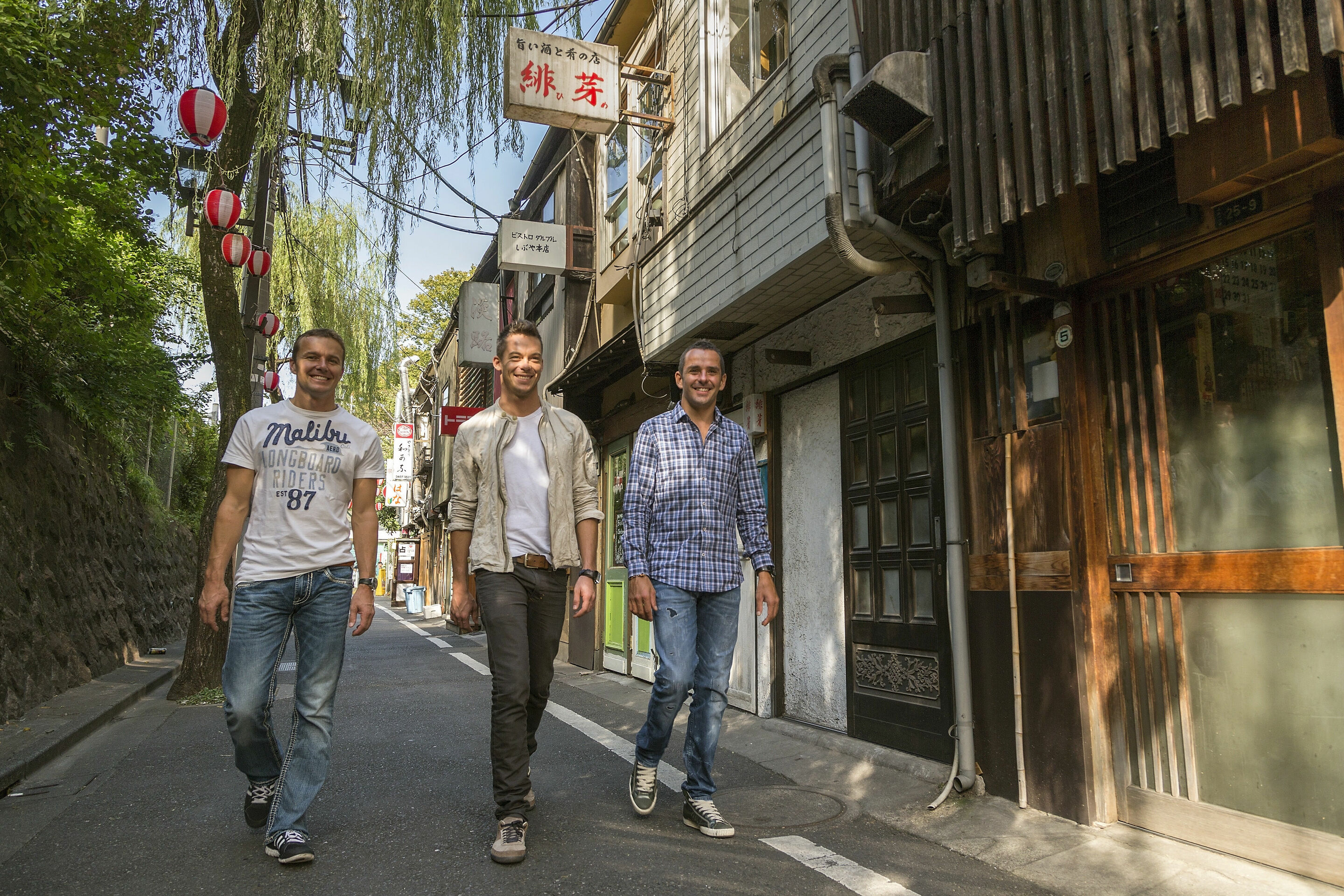 Three friends in the Audi R18 e-tron quattro
Three friends in the Audi R18 e-tron quattro
Audi’s Le Mans program has been in existence since 1999 and during this period there have been numerous successful driver teams competing in unchanged line-ups for many years. The three Le Mans winners Marcel Fässler/André Lotterer/Benoît Tréluyer (CH/D/F) are by now ranking in second place of this list.
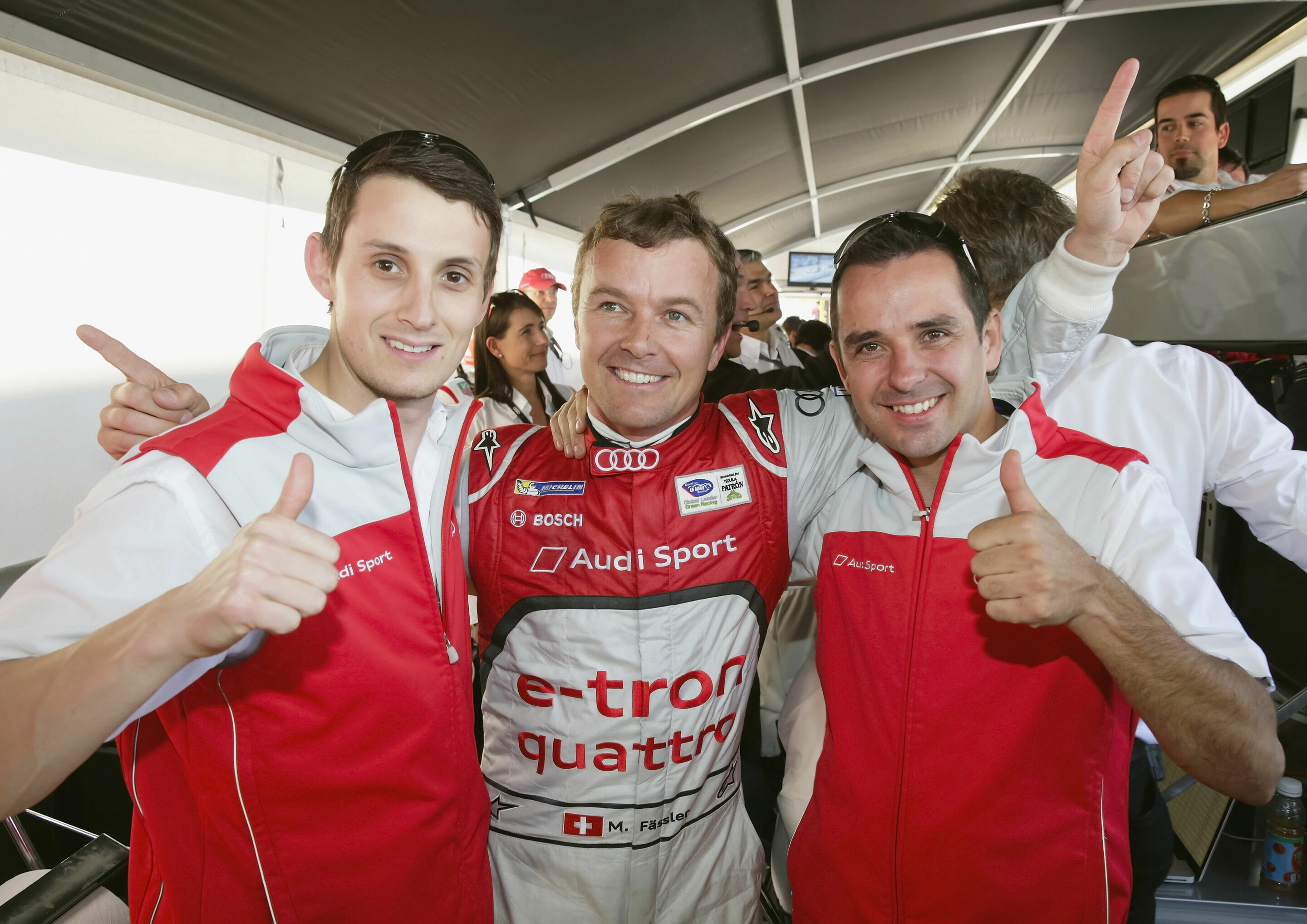 Record lap of the Audi R18 e-tron quattro
Record lap of the Audi R18 e-tron quattro
Marcel Fässler achieves new qualifying track record at Sebring Both hybrid race cars of Audi Sport Team Joest on front row Tenth pole position in total for Audi at Sebring
The Audi R18 e-tron quattro is causing a sensation on its first racing commitment in the United States. In qualifying for the 12-hour race at Sebring (Florida) both hybrid race cars from Audi Sport Team Joest clearly beat the previous qualifying track record.
In the cockpits of the two Audi R18 e-tron quattro cars, Marcel Fässler (CH) and Allan McNish (GB) fought a close duel for the top spot on the grid in the 15-minute qualifying session on Friday afternoon. In the end, the Swiss with a razor-thin advantage of 0.009 seconds prevailed against his Scottish team-mate. The two-time Le Mans winner and current World Endurance Champion took his first pole position in a Le Mans prototype plus his first one as an Audi factory driver. Fässler on his fourth flying lap managed setting a time of 1m 43.886s. The Audi racer thus beat the fastest time of the conventionally powered Audi R18 TDI from last year by almost two seconds – as well as the previous qualifying track record set by Marco Werner in 2007 in the Audi R10 TDI (1m 44.974s). At the – provisionally – last last run of an LMP1 sports car at Sebring, Fässler is sharing the cockpit of a 2012-specification R18 with Oliver Jarvis (GB) and Benoît Tréluyer (F). Lucas di Grassi (BR), Tom Kristensen (DK) and Allan McNish (GB) are driving the 2013-specification Audi R18 e-tron quattro that is celebrating its racing debut in Florida and completed initial test laps in its most current configuration on Monday. An accident by Allan McNish in Thursday morning’s free practice cost valuable track time. For Audi, this marks the tenth pole position in total at 14 events at Sebring. The brand with the four rings has so far won the U.S. endurance classic an equal number of times. In turn 1, Audi is exhibiting four of its Sebring-winning cars this weekend.
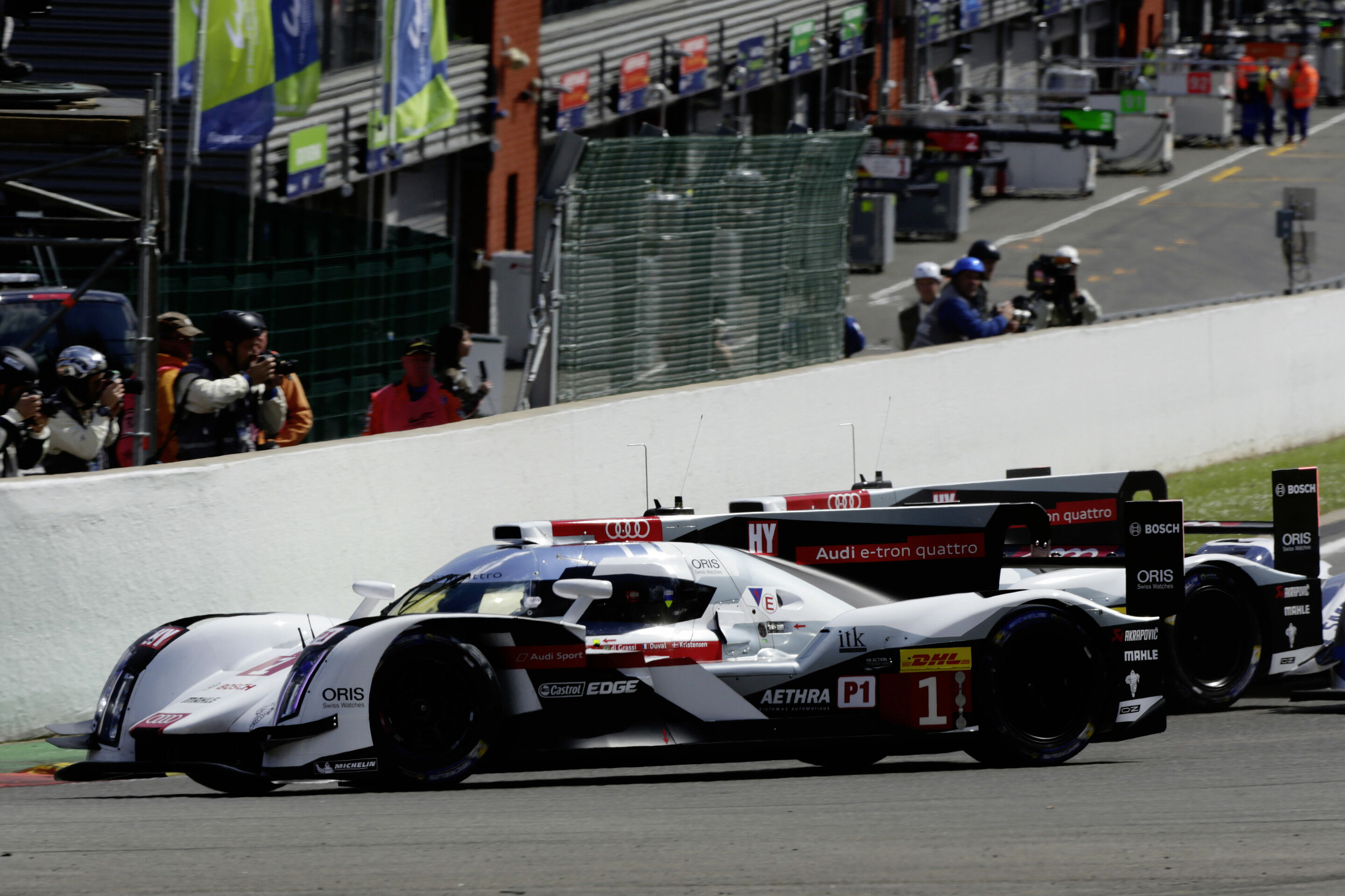 Audi R18 e-tron quattro with complex electronic architecture
Audi R18 e-tron quattro with complex electronic architecture
Telemetry connection between race car and pit lane Permanent acquisition of far more than 1,000 parameters Various electronic control units interlinked by a multitude of CAN Bus systems
The Audi R18 e-tron quattro is the most complex race car created in Ingolstadt and Neckarsulm to date. This not only applies to the mechanics. The electronics of the most recent LMP1 race car with the four rings is more sophisticated than ever before.
The age of electronic data transmission from the race car on track began for Audi in 1989. At that time, an Audi 90 quattro in the IMSA GTO series radioed eight parameters to the garage where engine speeds and a few pressures and temperatures were plotted on printouts – a tiny step from today’s perspective, but one that provided important insights at the time. Today, an Audi R18 e-tron quattro on more than a thousand channels, in cycles that in some cases only amount to milliseconds, generates data of crucial importance to a staff of engineers at Audi Sport. At Le Mans, the engineers constantly monitor their race cars for 24 hours. Whether it concerns the functionality of the systems, compliance with the regulations or information that is important for strategic reasons, the race car – similar to a medical EKG system – continually diagnoses its condition and reports it to the team garage. For this purpose, the LMP1 sports car is equipped with an array of CAN Bus systems which interlink a wide range of electronic control units (ECUs). Sophisticated sensors measure various parameters, such as suspension and acceleration data, temperatures and pressures, or information in the area of energy management, to generate a database for the ECUs. The R18 e-tron quattro has a master system control unit that is primarily responsible for engine and hybrid control and additionally communicates with the other control units in the race car – such as the ECUs for the transmission, clutch actuators, windshield wipers and the laser beam headlights.



